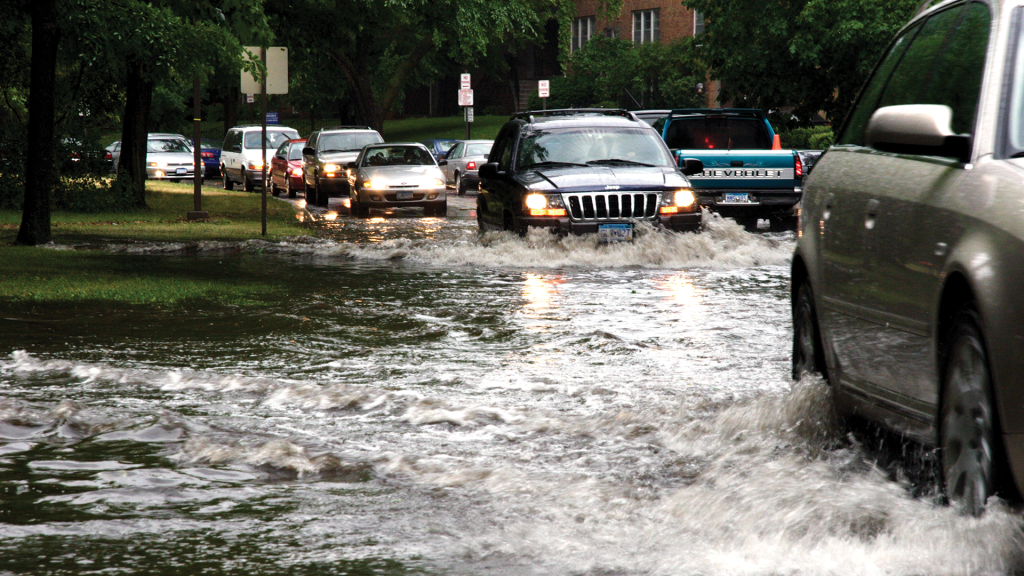As the 2025 rainy season sweeps across Nigeria, fears of devastating floods have resurfaced. Torrential downpours are already wreaking havoc in many parts of the country, following a disturbing trend that has persisted in recent years. Similar weather disasters have also hit the United States and parts of Europe, highlighting the global threat of climate-induced flooding. However, the damage in Nigeria has proven especially alarming, as weak infrastructure and poor preparedness continue to magnify the impact of seasonal rains.
Millions Affected Across Africa
The United Nations Office for the Coordination of Humanitarian Affairs reported that floods affected more than 7.5 million people across 18 countries in West and Central Africa in 2024. Chad experienced the highest number of victims, with 1.9 million people impacted. Following closely were Niger (1.5 million), Nigeria (1.3 million), and the Democratic Republic of the Congo (1.2 million).
By mid-July 2025, the UN had recorded that nearly 129,000 people had already been affected by floods this year across Nigeria, the DRC, Central African Republic, Congo, and Ghana—raising fears of an even worse disaster season.
Homes Lost, Farms Destroyed, Lives Shattered
The scale of destruction has continued to grow across Nigeria. In 2025 alone:
-
More than 3,800 homes were destroyed or severely damaged, accounting for the majority of the 5,300 structures reported affected across Nigeria and the Central African Republic.
-
Roughly 5,300 hectares of farmland have been submerged, threatening food security in already vulnerable regions.
-
At least 361 lives have been lost so far this year, while more than 600 people remain missing following a catastrophic flood in Mokwa, Niger State.
These figures point to a growing humanitarian crisis with ripple effects on health, food supply, and internal displacement.
Rising Economic Cost of Disasters
The 2025 UN Global Assessment Report on Disaster Risk Reduction placed global disaster-related losses at over $2.3 trillion annually. These losses include not only immediate infrastructure damage but also broader economic, social, and ecological consequences. For Nigeria, which continues to face budget constraints, the repeated economic toll of floods is unsustainable and demands urgent, coordinated solutions.
Flash Flood Risks Worsen Across the Country
The Nigerian Meteorological Agency (NiMET) recently warned that flash flood risks remain high across many states. Among those facing the most severe danger are:
-
Sokoto, Zamfara, Kaduna, Yobe, Bauchi, and Adamawa
-
Taraba, Niger, Nasarawa, Benue, Jigawa, Ogun, and Ondo
-
Bayelsa, Lagos, Edo, Delta, Cross River, Rivers, and Akwa Ibom
NiMET also issued practical safety guidelines to help reduce casualties. Residents in flood-prone areas are advised to:
-
Clear blocked drainages around their homes
-
Prepare emergency survival kits
-
Cut off electricity and gas when flooding begins
-
Take extra caution in areas susceptible to mudslides
-
Keep children home when roads are flooded
These preventative measures, if followed, could drastically reduce the number of casualties and losses.
Misuse of Ecological Funds and Poor Planning
Despite collecting over N620 billion in ecological funds from 2009 to 2023, Nigeria’s federal and state governments have failed to effectively deploy these resources. A 2025 report by SBM Intelligence revealed that:
-
By late 2024, flooding had affected 31 out of Nigeria’s 36 states
-
Over 1.2 million people were displaced
-
More than 180,000 hectares of farmland were washed away
Experts blame poor utilization of funds, lack of transparency, and the failure to complete important projects—such as the mid-level dams that were supposed to absorb the excess water from Cameroon’s Lagdo Dam. The regular overflow from this dam has had devastating consequences on Nigerian communities downstream, especially in Benue and Kogi States.
Calls for Coordinated Government Response
Analysts and disaster management experts are now calling for immediate action. All tiers of government—federal, state, and local—must collaborate to reduce further losses and prepare for future flood seasons. Agencies such as the National Emergency Management Agency (NEMA) and their counterparts at the state level should:
-
Identify and clearly mark resettlement and relief centers
-
Stockpile emergency relief materials
-
Establish flood early-warning systems at community levels
-
Conduct sensitization campaigns and evacuation drills
Crucially, governments must be prepared to enforce mandatory evacuations when necessary, even if communities resist. Saving lives must be the top priority.
Building Flood Resilience Through Reform
Beyond disaster response, Nigeria must start laying the foundation for long-term resilience. This includes:
-
Enforcing urban planning regulations to prevent buildings on waterways
-
Investing in proper drainage systems, especially in urban centers like Lagos and Port Harcourt
-
Encouraging environmentally responsible behavior such as regular sanitation and waste management
-
Strengthening national and sub-national institutions to monitor, prepare, and respond to floods effectively
Partnerships with development agencies can help fast-track these reforms and provide access to technical expertise and funding.
Turning the Tide Before It’s Too Late
Nigeria’s floods are not unexpected. They follow a seasonal pattern and come with years of warning. However, the country’s failure to plan for them is what turns a natural event into a national emergency every year.
To protect lives, infrastructure, and the economy, the nation must move from reactive disaster response to proactive planning. Only then can Nigeria withstand the storms ahead and safeguard its people from avoidable tragedies.












